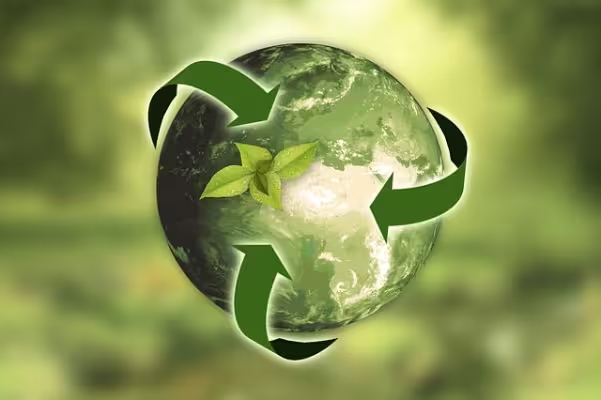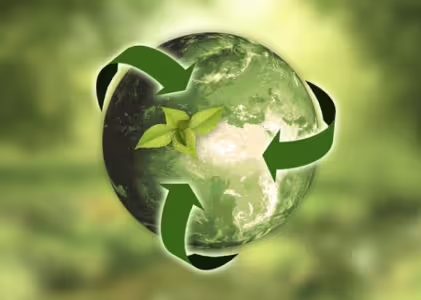Sustainable Technologies – The need for standard change has never been greater in the face of mounting environmental challenges. Resource consumption, if unabated, can only lead to an ecologically adverse legacy for generations to come with finite resources. Yet from the midst of all this sombre reality, there now emerges a glimmer of hope: that of sustainable technologies—this suite of innovative solutions promising to redefine our relationship with the planet.
The Visionaries Driving Change
The frontline soldiers driving this sea change are visionary scientists, engineers, and entrepreneurs who have dedicated their careers to laying down the intricate web of challenges possibly looming before us. Committed to sustainability and most definitely with a quenchless thirst for knowledge, these pioneers push the boundaries of what once seemed impossible into a new realm of eco-conscious innovation.

Renewable Energy: Tapping into Nature’s Limitless Power
Of all the green technological breakthroughs, probably the most astounding is that of renewable energy sources—particularly in the form of solar energy. Solar panels, once a niche solution for eccentric techie types, have truly undergone a sea change in terms of efficiency and cost. Today, sleek, neat, and inconspicuous, they blend well into the rooftops of residential houses and commercial buildings, silently converting radiant energy as emanated by the sun into a clean and sustainable source of electricity. We delve deep into this topic in our Renewable Energy Master article. If you want to find out how we will save the earth Check It out!
Harnessing the Unlimited Power of the Wind
Complementing the energy of the sun would be another renewable resource, ingeniously harnessed limitless energy of the winds through engineering. Wind turbines, with towering structures and sweeping blades that slice gracefully through the air, have become the iconic image of a sustainable energy revolution. The silent sentinels of the modern age turn kinetic energy in the wind into an extremely reliable source of electricity.
Nature’s Other Liquid Energy
The potential of water, however, has been harnessed much longer than the more recent. And highly publicized methods: solar and wind power. Hydroelectric power plants are thus intelligently located beside rivers and reservoirs to transform kinetic energy from the natural flow of the water into electricity by rotating turbines. While being a mature technology, hydroelectric power remains under evolution with such avant-garde solutions as run-of-river systems and tidal power plants that add really new and varied dimensions to this source of renewable energy.
Sustainable Agriculture: Growing a Greener Future
Precision Farming: Optimizing Resources, Maximizing Yields
At the very front line of this revolution in agriculture is precision farming—a technique in which big data, powered by advanced sensors, Global Positioning System technology, and sophisticated algorithms, optimize resource usage while maximizing yields.
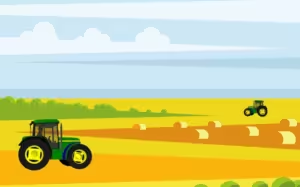
It can identify soil conditions, moisture levels, and needs regarding nutrients down to a T. It applies this knowledge by applying water, fertilizers, or pesticides with precision only when it needs to do so—in other words, reducing all levels of waste and their possible impacts on the environment.
Vertical Farming: Agriculture Reaching the Urban World
Vertical farming is especially one of the most innovative ways of producing food in densely populated urban areas. This ingenuity includes crops grown vertically stacked, often within a controlled environment that emulates favorable growing conditions. Through maximizing the utilization of vertical space, a vertical farm can produce expenses of fresh produce on a very small footprint, due to which this food system becomes quite an attractive pretrained model for cities looking at ways to increase food security levels and decrease their carbon footprint.
Clean Transportation: Driving Towards a Greener Horizon
Electric Vehicles: Powering a Cleaner Future
At the forefront of this transportation transformation are electric vehicles, which in a very short time have moved from novelty to mainstream transport. Using advanced battery technology and electric motors, EVs forgo the use of fossil fuels, thereby offering zero direct emissions and drastically reducing our reliance on non-renewable resources.
Autonomous Vehicles: Maximize Efficiency, Safety
Tied into the growth of electric vehicles is autonomous driving technology: a suite of advanced sensors, cameras, and AI systems that allow both vehicles to guide themselves and for self-management.
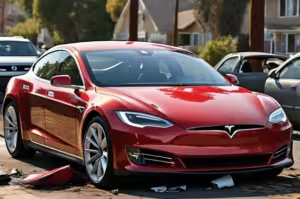
By taking out human error and maximizing driving patterns, autonomous vehicles can be designed to greatly reduce accidents, congestion, and fuel usage, bringing even more sustainability to our transportation systems. Such examples are Tesla Models, which are fully autonomous allowing easy navigation. Learn More on how these vehicles are transforming the tech industry and helping eliminate human error.
Sustainable Urban Living: Building Greener Communities
Green Buildings: Structures for an Ecofriendly and Sustainable Future.
The core of sustainable urban living is green buildings. These are basically designed and constructed buildings that emphasize energy efficiency. Water conservation, and the use of friendly environmental materials. From the installation of solar panels and green roofs to natural lighting. nd ventilation systems, these buildings are designed in such a way as to reduce everyone’s self-impact on the environment while creating a comfortable and healthy living space.
Smart Cities: Intelligent Infrastructure for Sustainable Living
Going beyond the individual building, the smart city concept represents a new distribution of how we design and function our urban environments. On the technological platform—Internet of Things, artificial intelligence, and advanced sensor networks—smart cities are aimed at achieving optimal resource use, cutting out waste, and achieving an improved quality of life for their citizens.

Frequently Asked Questions (FAQs) on Sustainable Technologies
1. What has been the primary benefit of solar energy?
Some of the key benefits of using solar energy include that it is a clean renewable energy with low operation costs once the installation ones are incurred; it can generate power in remote locations or areas off the grid.
2. How does precision agriculture further sustainable agriculture?
Precision farming is a way of farming that utilizes data and technology. To reduce wastage in water, fertilizers, and pesticides application to the minimum while maximizing output. This allows for target-oriented and effective use of resources depending on specific soil conditions and plant requirements.
3. What are the benefits of electric vehicles compared to traditional gas-run cars?
Electric vehicles have zero direct emissions, greatly decreasing air pollution and optimizing the level of greenhouse gases. They also have less running cost and less noise with superior acceleration owing to the instant torque available from electrical motors. We cover this in a full comprehensive guide on Tesla Models and how they are aiding in reducing emissions.
4. How do green buildings help in being sustainable?
Those buildings designed “green” incorporate energy efficiency, water conservation, and eco-friendly materials. They try to reduce impacts on the environment by cutting down on energy. Water use, engaging in renewable energy sources, and having a clean indoor environment.
5. What is the contribution of smart cities to sustainable living?
Smart cities leverage technologies such as the Internet of Things, artificial intelligence, and sensor networks. In optimizing resource use to achievemuracy and better life quality. They allow for the efficient management of energy, water, nation, and waste systems, among many other benefits.
Sustainable Technologies: Embracing Continuous Innovation
In moving into the future, the role that sustainable technologies will play becomes central. Such innovations are far from only being pragmatic solutions. Despite being beacons lighting the way toward sourcing a more sustainable. Harmonious existence with our planet. If these kinds of cutting-edge technologies could find adoption among all. With the promotion of a culture of guardianship for the environment.
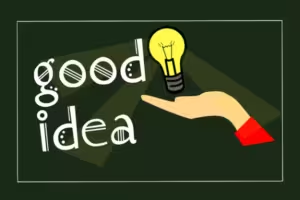
These very principles are sharply brought into focus. Then there opens up an entire world of possibilities. Where progress and preservation are twin pillars to secure the wonders of our natural world into the long future.
REFERENCES
1. “Sustainable Energy – Without the Hot Air” by David J.C. MacKay
2. “The Vertical Farm: Feeding the World in the 21st Century” by Dickson Despommier
3. “Clean Disruption of Energy and Transportation” by Tony Seba
4. “Sustainable Materials and Green Technology” by Mihail C. Roco and William S. Bainbridge (Editors)
5. “Smart Cities: Big Data, Civic Hackers, and the Quest for a New Utopia” by Anthony M. Townsend
6. “Sustainable technologies” By Wikipedia https://en.wikipedia.org/wiki/Category:Sustainable_technologies

